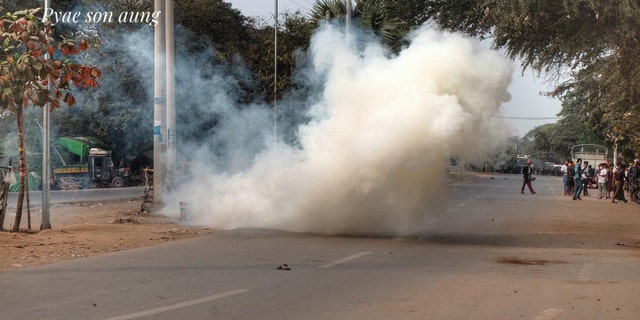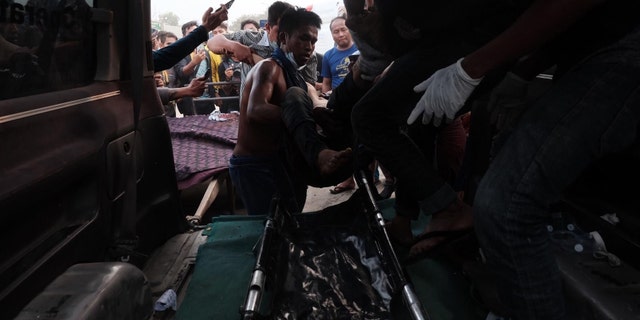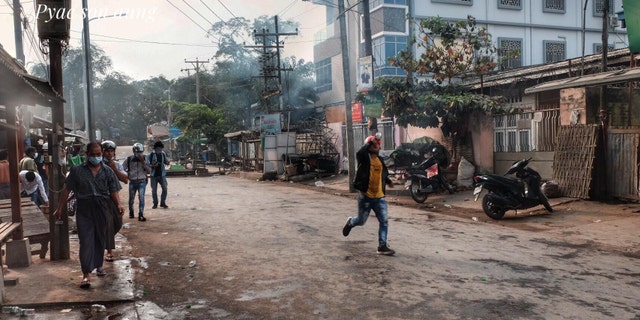At least two people were killed and dozens more injured in Burma on Saturday during protests against a Feb. 1 military coup that led to the detainment of Aung San Suu Kyi, the country’s de facto leader.
The violence broke out in Mandalay, Burma’s second-largest city with a population of about 1.2 million people.
“One person died before my eyes, he was shot in the head. I can’t say the age exactly but it appeared it was a young boy. … A friend of mine saw the same thing, another person shot and killed in front of his eyes. So I can say for sure two died on the spot,” said Pyae Sone Aung, a freelance photojournalist from Mandalay who attended the protest.

One of the men killed was identified by relatives as Thet Naing Win, a 36-year-old carpenter, Reuters reported.
BURMA SECURITY FORCES CONTINUE PROTEST INTIMIDATION, US EMBASSY AUTHORIZES VOLUNTARY EVACUATION
According to protesters, people began to gather at 8 a.m. at a local shipyard in Mandalay, hoping to block military police from entering the city. Things turned violent around 2 p.m. when local squatters living by the side of the road began throwing stones at police forces who were using water cannons to control the crowds, Pyae Sone Aung said.
“These people were throwing sticks and stones, they weren’t even close to reaching the police,” the witness said.
According to Sone Aung, this is when police started firing bullets into the air and chaos broke out.
“We did not know who got shot at first, it was like a war zone,” Sone Aung said. “All we could do was wait until the police retreated so that ambulances and paramedics could come and pick up the bodies, people injured and shot.”
According to Sone Aung, police used live ammunition, rubber bullets, tear gas and water cannons against the protesters.


“At first when there were gunshots the people ran into houses and scattered, but then everyone felt numb and knew this was so unjust, they ran back out to see what happened. … They came out with whatever they could use to retaliate — sling shots, stones.”
Around noon, news of the violence began to reach Yangon — Burma’s biggest city with about 4.4 million residents.
“A boy has died in Mandalay,” a woman who holds both U.S. and Burmese citizenship and is living in Yangon told Fox News in a WhatsApp message under the condition of anonymity. “He was volunteering to help injured persons during the crackdown by the military where he was shot to the head.”
She continued: “During the past 19 days … today is the worst. People are telling us not to fight the military and the police. … This is what the military wants … so that the UN and US won’t come in.”

A young woman, Nay Pyi Taw, died Friday night from injuries suffered at a protest on Feb. 9, the first reported death as a result of security forces’ response to the protests, according to the U.S. State Department.
“We condemn any violence against the people of Burma and reiterate our calls on the Burmese military to refrain from violence against peaceful protesters,” said Ned Price, a State Department spokesman. “We will work with partners and allies to press the Burmese military to reverse its actions and to help the people of Burma realize their aspirations for peace, democracy and the rule of law.”
CLICK HERE TO GET THE FOX NEWS APP
For some in the country though, strong words from foreign powers are not enough.
“We would like the U.S. to come in and intervene,” the American/Burmese woman in Yangon said. “Instead of words, sending letters saying they condemn the coup, they must act and demand Aung San Su Kyi’s release.”